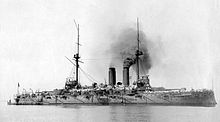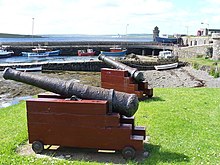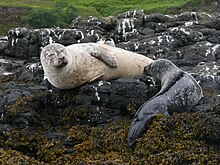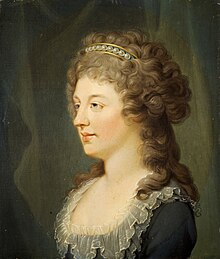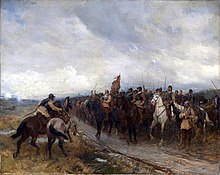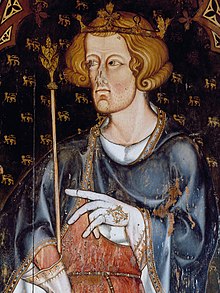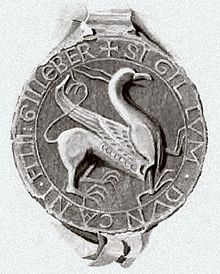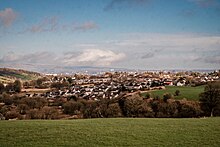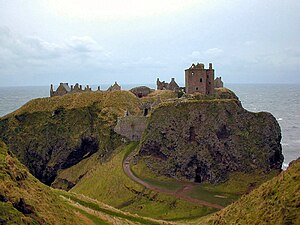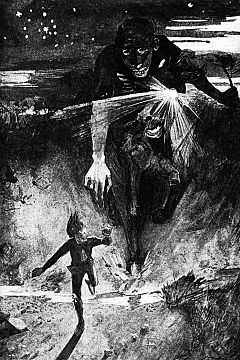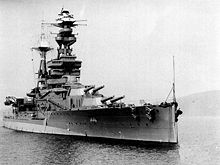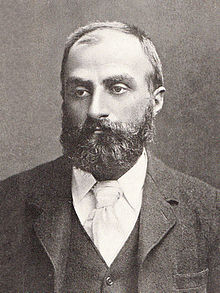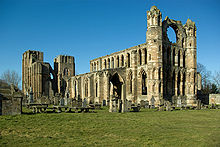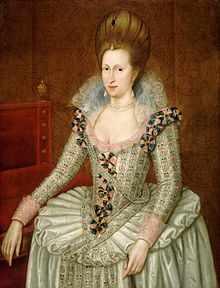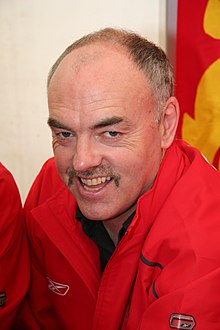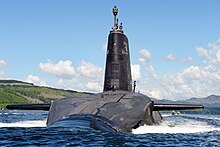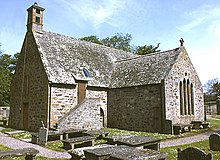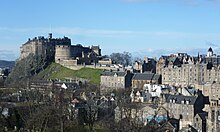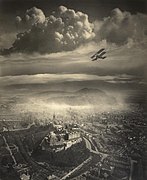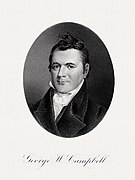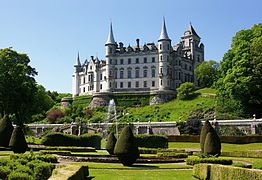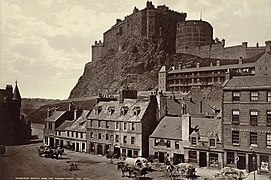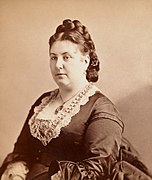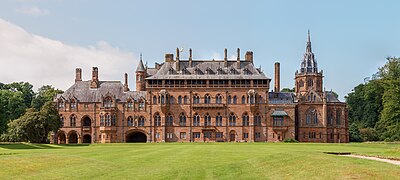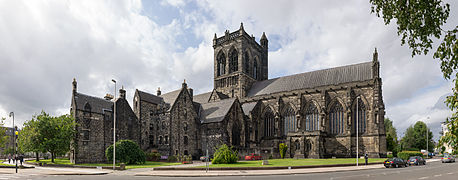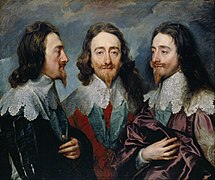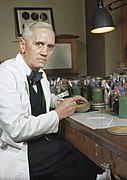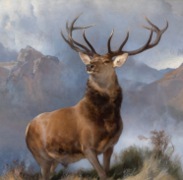Portal:Scotland/Featured
The Scotland Portal
View from An Teallach
| Main Page | Selected articles 1 | Selected articles 2 | Selected biographies | Selected quotes | Selected pictures | Featured Content | Categories & Topics |
Selection of featured articles
Selection of good articles
Cullen Old Church (also known as Cullen Auld Kirk) is the parish church for Cullen and Deskford, in Moray. It was originally a part of the Roman Catholic Church, but has been a part of the Church of Scotland since the Scottish Reformation. John R. Hume describes Cullen Old Church as a fine example of late Scots Gothic architecture, and it was designated a Category A listed building in 1972. It is still an active place of worship, with weekly services presided over by Rev Douglas F Stevenson.
First mentioned in records dating from 1236 that document its elevation to a parish church, it was further elevated to collegiate status in 1543, and underwent a series of extensions, improvements and renovations in the centuries that followed. It is known for being the burial place of the internal organs of Queen Elizabeth de Burgh. After Elizabeth died at Cullen Castle in 1327, her body was taken to Dunfermline for interment, but the organs, which were removed as part of the embalming process, were buried at the church. Her husband, King Robert the Bruce, subsequently established a chaplaincy at the church to offer prayers for her soul. (Full article...)
A brownie or broonie (Scots), also known as a brùnaidh or gruagach (Scottish Gaelic), is a household spirit or Hobgoblin from Scottish folklore that is said to come out at night while the owners of the house are asleep and perform various chores and farming tasks. The human owners of the house must leave a bowl of milk or cream or some other offering for the brownie, usually by the hearth. Brownies are described as easily offended and will leave their homes forever if they feel they have been insulted or in any way taken advantage of. Brownies are characteristically mischievous and are often said to punish or pull pranks on lazy servants. If angered, they are sometimes said to turn malicious, like boggarts.
Brownies originated as domestic tutelary spirits, very similar to the Lares of ancient Roman tradition. Descriptions of brownies vary regionally, but they are usually described as ugly, brown-skinned, and covered in hair. In the oldest stories, they are usually human-sized or larger. In more recent times, they have come to be seen as small and wizened. They are often capable of turning invisible, and they sometimes appear in the shapes of animals. They are always either naked or dressed in rags. If a person attempts to present a brownie with clothing or baptize it, it will leave forever. (Full article...)
Charles Irving (fl. 1768–1781) was a Scottish naval surgeon and inventor. In 1770, he introduced a method for distillation of seawater to the Royal Navy, and was awarded the sum of £5,000 (equivalent to £880,000 in 2023) for his method in 1772. His apparatus for distilling seawater was used on the second voyage of James Cook and on the 1773 expedition by Constantine John Phipps towards the North Pole, in which Irving participated both as surgeon and as scientific collaborator of Phipps. He was later involved in British colonial enterprises in Central America that included an attempt to establish a crown colony on the Mosquito Shore, but his plans were thwarted by Spanish intervention. (Full article...)
Lieutenant-Colonel Lord Ninian Edward Crichton-Stuart (15 May 1883 – 2 October 1915) was a Scottish senior officer in the British Army and Member of Parliament. He was killed in action in the First World War. The second son of the Honourable Gwendolen Mary Anne Fitzalan-Howard and John Crichton-Stuart, 3rd Marquess of Bute, he entered the army in 1903 and served in the Queen's Own Cameron Highlanders and the Scots Guards as a lieutenant. After marrying he began a career in politics, serving first as a councillor on Fife County Council, Scotland. His family having close connections to the city of Cardiff in Wales, he fought and lost the January 1910 election there as a Liberal Unionist candidate. The resulting hung parliament led to a second election in December 1910, in which Crichton-Stuart won the seat.
In 1912, he took command of the 6th (Glamorgan) Battalion, The Welch Regiment. Upon the outbreak of the First World War, he volunteered his unit for service and joined the British Expeditionary Force on the Western Front. After eleven months on the front line, he was shot in the head and killed when leading his men in an attempt to repel a German counter-attack on 2 October 1915 during the Battle of Loos. He was one of 22 MPs that were killed during the conflict and the only serving MP from Wales to be killed. (Full article...)
Michelle Georgina Mone, Baroness Mone, OBE (née Allan; born 8 October 1971) is a Scottish businesswoman and life peer. She has set up several businesses, including MJM International Ltd in 1996 and the lingerie company Ultimo along with her then husband Michael Mone. Other ventures include naturopathic 'weight-loss' pills, and a fake tan product via Ultimo Beauty.
Mone became a Conservative life peer in 2015. During the COVID-19 pandemic, Mone's husband's company PPE Medpro was awarded £200m of contracts to provide PPE by the UK government. The company made a profit of £60m and some of the products they provided were defective and went unused. From 2020 to 2023, Mone vehemently denied that she or her husband had any involvement with the contracts. In January 2022 The House of Lords Commissioner for Standards and National Crime Agency launched investigations into Mone's links to the contracts. Mone announced in December that year that she was taking a leave of absence from the House of Lords "to clear her name" amid the allegations. Shortly afterwards the UK government announced plans to sue PPE Medpro for £122 million plus costs over the defective items. In December 2023, Mone disclosed that she had been involved with PPE Medpro and said she had previously denied it to protect her family. In February 2024, a leak revealed that five months prior to £29 million of PPE Medpro's profits being transferred into a trust that Mone would benefit from, she assured the government that she wouldn't gain "any financial benefit whatsoever", and that there were "no conflicts whatsoever" with regard to the company she had recommended to the government. (Full article...)

Duncraig Castle is a mansion in Lochalsh, in the west of the Scottish Highlands. A category-C listed building, it is situated in the Highland council area, east of the village of Plockton on the south shore of Loch Carron. It was built in 1866 in the Scottish baronial style, to designs by Alexander Ross, for Scottish Member of Parliament and businessman Alexander Matheson. The castle remained in the Matheson family until the 1920s, when it was sold to Sir Daniel Hamilton and his wife Margaret, who owned the neighbouring estate. The Hamiltons intended to use the castle for educational purposes in the local community, but this never came to fruition and following the outbreak of World War II, the castle was used as a naval hospital. By the end of the war, Daniel Hamilton had died, and Margaret bequeathed the castle to the local council, which converted it for use as a home economics college for girls, operating in this capacity until its closure in 1989.
After standing derelict for more than a decade, the castle was bought by the Dobson family of England in 2002, seventeen of whom moved in. Faced with huge renovation costs, the family had several disputes, and sold their story to a television company, who produced a five-part series which aired on BBC1. In 2009, after most of the family had moved away, the Dobsons sold the castle. It was bought with the intention of converting it to a bed and breakfast, which operated for two years but then closed, as the castle remained in need of major renovation. The castle operated as a Bed and Breakfast and wedding venue in 2021 and 2022. It was sold into private ownership in late 2022 and the bed and breakfast is permanently closed. (Full article...)
Sir Andrew Dudley, KG (c. 1507 – 1559) was an English soldier, courtier, and diplomat. A younger brother of John Dudley, 1st Duke of Northumberland, he served in Henry VIII's navy and obtained court offices under Edward VI. In 1547–1548 he acted as admiral of the fleet and participated in the War of the Rough Wooing in Scotland, where he commanded the English garrison of Broughty Castle. He was appointed captain of the fortress of Guînes in the Pale of Calais in late 1551. There he got involved in a dispute with the Lord Deputy of Calais, which ended only when both men were replaced in October 1552.
In October 1549 Andrew Dudley became one of Edward VI's Chief Gentlemen of the Privy Chamber and later keeper of the Palace of Westminster, in which function he was responsible for the Royal Wardrobe and Privy Purse. In early 1553 he was sent on a diplomatic mission to the Emperor Charles V to suggest peace talks between France and the Empire. Andrew Dudley was bethrothed to Margaret Clifford, a first cousin of Lady Jane Grey, in June 1553; yet his marriage plans came to naught with the accession of Mary I, and on 19 August 1553 he was condemned to death for his part in his brother's attempt to establish Lady Jane on the English throne. Released in January 1555, he lived in London until his death in 1559. (Full article...)
HMS Conqueror was the third of four Orion-class dreadnought battleships built for the Royal Navy in the early 1910s. She spent the bulk of her career assigned to the Home and Grand Fleets. Aside from participating in the failed attempt to intercept the German ships that had bombarded Scarborough, Hartlepool and Whitby in late 1914, the Battle of Jutland in May 1916 and the inconclusive action of 19 August, her service during World War I generally consisted of routine patrols and training in the North Sea.
After the Grand Fleet was dissolved in early 1919, Conqueror was transferred back to the Home Fleet for a few months before she was assigned to the Reserve Fleet. The ship was sold for scrap in late 1922 and subsequently broken up. (Full article...)

The Clydesdale is a Scottish breed of draught horse. It takes its name from Clydesdale, a region of Scotland centred on the River Clyde.
The origins of the breed lie in the seventeenth century, when Flemish stallions were imported to Scotland and mated with local mares; in the nineteenth century, Shire blood was introduced. The first recorded use of the name "Clydesdale" for the breed was in 1826; the horses spread through much of Scotland and into northern England. After the breed society was formed in 1877, thousands of Clydesdales were exported to many countries of the world, particularly to Australia and New Zealand. In the early twentieth century numbers began to fall, both because many were taken for use in the First World War, and because of the increasing mechanisation of agriculture. By the 1970s, the Rare Breeds Survival Trust considered the breed vulnerable to extinction. Numbers have since increased slightly. (Full article...)
A Dandie Dinmont Terrier is a small Scottish dog breed in the terrier family. The breed has a very long body, short legs, and a distinctive topknot of hair on the head. They are friendly but tough, and are suitable for interaction with older children. There are breed-specific health concerns: they can be affected by spinal problems due to their elongated body, and the breed is affected by canine cancer at a higher than average rate.
The breed is named after a fictional character in Sir Walter Scott's novel, Guy Mannering. This character, Dandie Dinmont, is thought to be partly based on James Davidson, who is credited as the originator of the modern breed. Davidson's dogs descended from earlier terrier-owning families, including the Allans of Holystone, Northumberland. (Full article...)
Scotland in the early modern period refers, for the purposes of this article, to Scotland between the death of James IV in 1513 and the end of the Jacobite risings in the mid-eighteenth century. It roughly corresponds to the early modern period in Europe, beginning with the Renaissance and Reformation and ending with the start of the Enlightenment and Industrial Revolution.
After a long minority, the personal reign of James V saw the court become a centre of Renaissance patronage, but it ended in military defeat and another long minority for the infant Mary Queen of Scots. Scotland hovered between dominance by the English and French, which ended in the Treaty of Edinburgh 1560, by which both withdrew their troops, but leaving the way open for religious reform. The Scottish Reformation was strongly influenced by Calvinism leading to widespread iconoclasm and the introduction of a Presbyterian system of organisation and discipline that would have a major impact on Scottish life. In 1561 Mary returned from France, but her personal reign deteriorated into murder, scandal and civil war, forcing her to escape to England where she was later executed and leaving her Protestant opponents in power in the name of the infant James VI. In 1603 he inherited the thrones of England and Ireland, creating a dynastic union and moving the centre of royal patronage and power to London. (Full article...)
After a long minority, the personal reign of James V saw the court become a centre of Renaissance patronage, but it ended in military defeat and another long minority for the infant Mary Queen of Scots. Scotland hovered between dominance by the English and French, which ended in the Treaty of Edinburgh 1560, by which both withdrew their troops, but leaving the way open for religious reform. The Scottish Reformation was strongly influenced by Calvinism leading to widespread iconoclasm and the introduction of a Presbyterian system of organisation and discipline that would have a major impact on Scottish life. In 1561 Mary returned from France, but her personal reign deteriorated into murder, scandal and civil war, forcing her to escape to England where she was later executed and leaving her Protestant opponents in power in the name of the infant James VI. In 1603 he inherited the thrones of England and Ireland, creating a dynastic union and moving the centre of royal patronage and power to London. (Full article...)
Edinburgh Castle is a historic castle in Edinburgh, Scotland. It stands on Castle Rock, which has been occupied by humans since at least the Iron Age. There has been a royal castle on the rock since at least the reign of Malcolm III in the 11th century, and the castle continued to be a royal residence until 1633. From the 15th century, the castle's residential role declined, and by the 17th century it was principally used as a military garrison. Its importance as a part of Scotland's national heritage was recognised increasingly from the early 19th century onwards, and various restoration programmes have been carried out over the past century and a half.
Edinburgh Castle has played a prominent role in Scottish history, and has served variously as a royal residence, an arsenal, a treasury, a national archive, a mint, a prison, a military fortress, and the home of the Honours of Scotland – the Scottish regalia. As one of the most important strongholds in the Kingdom of Scotland, the castle was involved in many historical conflicts from the Wars of Scottish Independence in the 14th century to the Jacobite rising of 1745. Research undertaken in 2014 identified 26 sieges in its 1,100-year history, giving it a claim to having been "the most besieged place in Great Britain and one of the most attacked in the world". Few of the present buildings pre-date the Lang Siege of 1573, when the medieval defences were largely destroyed by artillery bombardment. The most notable exceptions are St Margaret's Chapel from the early 12th century, which is regarded as the oldest building in Edinburgh, the Royal Palace, and the early 16th-century Great Hall. The castle is the site of the Scottish National War Memorial and the National War Museum. The British Army is still responsible for some parts of the castle, although its presence is now largely ceremonial and administrative. The castle is the regimental headquarters of the Royal Regiment of Scotland and the Royal Scots Dragoon Guards and houses their regimental museums, along with that of the Royal Scots. (Full article...)
The Highlands and Islands Alliance or Càirdeas was a minor Scottish electoral alliance that was active in the late 1990s. Founded in the autumn of 1998 by non-partisan politicians local to the Highlands and Islands, it only contested the inaugural Scottish Parliament election of 1999, where it collected a negligible 1.3% of the regional vote and despite a reasonably publicised campaign, failed to elect any of its candidates. Led by anti-nuclear activist Lorraine Mann, the Alliance was established to better represent marginalised communities in rural Scotland, who they felt had been ignored by government in favour of those in the more densely populated Central Belt. Its policies were near exclusively centred on localism and rural issues, only contesting Scotland's regional additional member system so that electors could vote on nationwide matters through their constituency ballot. After the election, the group remained politically inactive until it was quietly disestablished in August 2004.
Although electorally unimportant, the Alliance's legal campaign to allow political job sharing in the Scottish Parliament attracted considerable media and academic coverage. The dispute has since become the subject of legislative research by both the Northern Ireland Assembly and the British House of Commons, where it informed debate surrounding the Sex Discrimination (Election Candidates) Act 2002. (Full article...)
Although electorally unimportant, the Alliance's legal campaign to allow political job sharing in the Scottish Parliament attracted considerable media and academic coverage. The dispute has since become the subject of legislative research by both the Northern Ireland Assembly and the British House of Commons, where it informed debate surrounding the Sex Discrimination (Election Candidates) Act 2002. (Full article...)
James Ferguson, Lord Pitfour (1700 – 25 June 1777) was a Scottish advocate and second Laird of Pitfour, a large estate in Buchan. His flourishing law practice was sited opposite Parliament House in Edinburgh. He became Dean of the Faculty of Advocates in 1760 and was elevated to the bench as Lord Pitfour, in 1764.
Pitfour was described as one of the greatest lawyers in the country. However, by the time he became a Senator of the College of Justice he was past his prime intellectually and thus did not make much of an impact in that role. A Jacobite sympathiser, he is best known for his defence of rebels standing trial at Carlisle after the Jacobite risings. (Full article...)
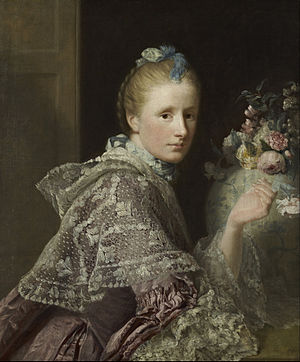
Scottish art in the eighteenth century is the body of visual art made in Scotland, by Scots, or about Scottish subjects, in the eighteenth century. This period saw development of professionalisation, with art academies were established in Edinburgh and Glasgow. Art was increasingly influenced by Neoclassicism, the Enlightenment and towards the end of the century by Romanticism, with Italy becoming a major centre of Scottish art.
The origins of the tradition of Scottish landscape painting are in the capriccios of Italian and Dutch landscapes undertaken by James Norie and his sons. These were further developed by Jacob More, who added a romantic sensibility to the Scottish landscape. Alexander Nasmyth helped found the Scottish landscape tradition and was highly influential as a teacher in Edinburgh on the subsequent generation of artists. John Knox linked it with the Romantic, historical myth-making novels of Walter Scott and was one of the first artists to take an interest in the urban landscape of Glasgow. Aberdeen-born John Alexander and William Mossman were the leading portrait artists of the first half of the century. Allan Ramsay emerged as the leading portrait painter of the mid-century and to the royal family, noted for his intimate representations. Towards the end of the century Henry Raeburn emerged as the leading portraitist and one of the first artists to spend the majority of their career in Scotland, extending his range to leading figures of the Enlightenment and most famous for his depiction of the Skating Minister. (Full article...)
Charles Edward Louis John Sylvester Maria Casimir Stuart (31 December 1720 – 30 January 1788) was the elder son of James Francis Edward Stuart making him the grandson of James VII and II, and the Stuart claimant to the thrones of England, Scotland, and Ireland from 1766 as Charles III. During his lifetime, he was also known as "the Young Pretender" and "the Young Chevalier"; in popular memory, he is known as Bonnie Prince Charlie.
Born in Rome to the exiled Stuart court, he spent much of his early and later life in Italy. In 1744, he travelled to France to take part in a planned invasion to restore the Stuart monarchy under his father. When the French fleet was partly wrecked by storms, Charles resolved to proceed to Scotland following discussion with leading Jacobites. This resulted in Charles landing by ship on the west coast of Scotland, leading to the Jacobite rising of 1745. The Jacobite forces under Charles initially achieved several victories in the field, including the Battle of Prestonpans in September 1745 and the Battle of Falkirk Muir in January 1746. However, by April 1746, Charles was defeated at Culloden, which effectively ended the Stuart cause. Although there were subsequent attempts such as a planned French invasion in 1759, Charles was unable to restore the Stuart monarchy. (Full article...)
Scotland in the Middle Ages concerns the history of Scotland from the departure of the Romans to the adoption of major aspects of the Renaissance in the early sixteenth century.
From the fifth century northern Britain was divided into a series of kingdoms. Of these the four most important to emerge were the Picts, the Gaels of Dál Riata, the Britons of Strathclyde and the Anglo-Saxon kingdom of Bernicia, later taken over by Northumbria. After the arrival of the Vikings in the late eighth century, Scandinavian rulers and colonies were established along parts of the coasts and in the islands. (Full article...)
From the fifth century northern Britain was divided into a series of kingdoms. Of these the four most important to emerge were the Picts, the Gaels of Dál Riata, the Britons of Strathclyde and the Anglo-Saxon kingdom of Bernicia, later taken over by Northumbria. After the arrival of the Vikings in the late eighth century, Scandinavian rulers and colonies were established along parts of the coasts and in the islands. (Full article...)
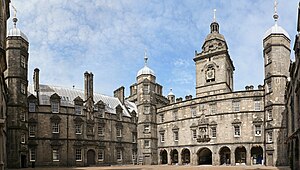
Architecture in early modern Scotland encompasses all building within the borders of the kingdom of Scotland, from the early sixteenth century to the mid-eighteenth century. The time period roughly corresponds to the early modern era in Europe, beginning with the Renaissance and Reformation and ending with the start of the Enlightenment and Industrialisation.
Vernacular architecture made use of local materials such as stone, turf and, where available, wood. Most of the population was housed in small hamlets and isolated dwellings. The most common form of dwelling throughout Scotland was the long house, shared by humans and animals. About ten percent of the population lived in the burghs, in a mixture of half-timbered and stone houses. (Full article...)
The Cookery Book of Lady Clark of Tillypronie is a book of recipes collected over a lifetime by Charlotte, Lady Clark of Tillypronie (née Coltman, 1851–1897), and published posthumously in 1909. The earliest recipe was collected in 1841; the last in 1897. The book was edited by the artist Catherine Frances Frere, who had seen two other cookery books through to publication, at the request of Clark's husband.
The book is considered a valuable compilation of Victorian era recipes. Lady Clark obtained the recipes by asking hostesses or cooks, and then testing each one at Tillypronie. She documented each recipe's source with the name of her source, and often also the date. There is comprehensive coverage of plain British cooking, especially of meat and game, but the book has sections on all aspects of contemporary cooking including bread, cakes, eggs, cooking for invalids, jams, pies, sauces, sweets (puddings) and vegetables. She had lived in Italy and France, and the cuisines of these countries are represented by many dishes, as is Anglo-Indian cooking with a section called "Curries". (Full article...)
Lists of featured content
| This is a list of recognized content, updated weekly by JL-Bot (talk · contribs) (typically on Saturdays). There is no need to edit the list yourself. If an article is missing from the list, make sure it is tagged (e.g. {{WikiProject Scotland}}) or categorized correctly and wait for the next update. See WP:RECOG for configuration options. |
Featured articles
- Áedán mac Gabráin
- Anglo-Scottish war (1650–1652)
- Anne, Queen of Great Britain
- Anne of Denmark
- HMS Argus (I49)
- Japanese battleship Asahi
- Battle of Blenheim
- Blue men of the Minch
- William Bruce (architect)
- William Speirs Bruce
- Burke and Hare murders
- Burnt Candlemas
- Constantine II of Scotland
- Cullen House
- David I of Scotland
- Walter Donaldson (snooker player)
- Donnchadh, Earl of Carrick
- Alec Douglas-Home
- Battle of Dunbar (1650)
- Edward I of England
- Elgin Cathedral
- Queen Elizabeth The Queen Mother
- Fauna of Scotland
- From the Doctor to My Son Thomas
- Rachel Chiesley, Lady Grange
- Margaret Macpherson Grant
- Great North of Scotland Railway
- Bryan Gunn
- Battle of Halidon Hill
- HMS Hood
- Battle of Inverkeithing
- James II of England
- James VI and I
- Jocelin of Glasgow
- Kelpie
- John Knox
- Elizabeth Maitland, Duchess of Lauderdale
- Gregor MacGregor
- Mary, Queen of Scots
- Murray Maxwell
- William McGregor (football)
- Nebula Science Fiction
- Neilston
- Nuckelavee
- Order of the Thistle
- Pitfour estate
- HMS Ramillies (07)
- Renewable energy in Scotland
- Representative peer
- HMS Royal Oak (08)
- Scotland in the High Middle Ages
- Scotland national football team
- Scottish National Antarctic Expedition
- Shapinsay
- Isle of Skye
- Charlotte Stuart, Duchess of Albany
- HMS Vanguard (23)
- Second War of Scottish Independence
- John Wark
- Westminster Assembly
- John Michael Wright
Former featured articles
Good articles
- A82 road
- 2001 Scottish Masters
- 2002 Scottish Masters
- 2014 Scottish Labour leadership election
- 2022 Aberdeen City Council election
- 2022 Aberdeenshire Council election
- 2022 Angus Council election
- 2022 Argyll and Bute Council election
- 2022 Clackmannanshire Council election
- 2022 East Ayrshire Council election
- 2022 Glasgow City Council election
- 2022 North Ayrshire Council election
- 2022 South Ayrshire Council election
- 2022 South Lanarkshire Council election
- Aberdeen F.C.
- Aberdeen F.C.–Rangers F.C. rivalry
- Aberdour Castle
- William Adam (architect)
- Arbroath
- Architecture of Scotland
- Architecture in early modern Scotland
- Architecture in modern Scotland
- Architecture of Scotland in the Industrial Revolution
- Architecture of Scotland in the Middle Ages
- Architecture of Scotland in the Roman era
- Architecture of Scotland in the prehistoric era
- Isle of Arran
- Art in Medieval Scotland
- Art in early modern Scotland
- Art in modern Scotland
- James Balfour (died 1845)
- John Barrowman
- Battle of Barry
- Jim Baxter
- Ian Begg (architect)
- Ben Nevis
- Lewis Benson (boxer)
- Guy Berryman
- The Bhoys from Seville
- Billy Boys
- The Black Island
- HMS Bonaventure (31)
- Boobrie
- Eilley Bowers
- Bill Bowman (Scottish politician)
- British people
- Gordon Brown
- Brownie (folklore)
- Alexander Buchan (artist)
- Calendar (New Style) Act 1750
- James Campbell (British Army officer, died 1745)
- Camus Cross
- Thomas Carlyle
- Castles in Scotland
- Celtic F.C. in European football
- Celtic Park
- Erik Chisholm
- Church architecture in Scotland
- Winston Churchill
- Clan Maclachlan
- Clydesdale horse
- HMS Conqueror (1911)
- The Cookery Book of Lady Clark of Tillypronie
- Coxton Tower
- Craigiehall
- Lord Ninian Crichton-Stuart
- Cruachan Power Station
- Cullen Old Church
- 1966 European Cup Winners' Cup final
- The Daily Mash
- Dandie Dinmont Terrier
- Ruth Davidson
- Demographic history of Scotland
- Paul Dickov
- Mary Docherty
- Donkey Punch (novel)
- Doune Castle
- Dowhill Castle
- Dubh Artach
- Andrew Dudley
- Duncraig Castle
- Dunnottar Castle
- Dunrobin Castle
- Dunstaffnage Castle
- East Kirkton Quarry
- East Stirlingshire F.C.
- Easter Road
- Economy of Scotland in the Middle Ages
- Economy of Scotland in the early modern period
- Edinburgh Castle
- University of Edinburgh
- Edinburgh Zoo
- Education in Medieval Scotland
- Education in early modern Scotland
- Edzell Castle
- Eenoolooapik
- Eidyn
- Elcho Castle
- English invasion of Scotland (1400)
- Eriskay Pony
- Estate houses in Scotland
- 1884 FA Cup final
- Edward G. Faile
- Fairy Flag
- Falkirk Wheel
- Family in early modern Scotland
- James Ferguson, Lord Pitfour
- James Ferguson (Scottish politician)
- Finnieston Crane
- Flag of Scotland
- Flora of Scotland
- Sir Ewan Forbes, 11th Baronet
- Forglen House
- Forth Bridge
- Forth Valley Royal Hospital
- Dario Franchitti
- Château Gaillard
- Ryan Gauld
- Geography of Scotland in the Middle Ages
- Geography of Scotland in the early modern era
- Geology of Scotland
- Giffnock
- Gilli (Hebridean earl)
- Glass Swords
- The Glenlivet distillery
- Glenrothes
- Glorious Revolution in Scotland
- Government in early modern Scotland
- Government in medieval Scotland
- Isobel Gowdie
- Grey Gowrie
- John Gregorson Campbell
- Hampden Park
- Hibernian F.C.
- Highland cattle
- Highlands and Islands Alliance
- Lists of mountains and hills in the British Isles
- Hillforts in Scotland
- History of Scotland
- History of agriculture in Scotland
- Mary Hogarth
- Housing in Scotland
- How the Scots Invented the Modern World
- Leslie Hunter
- HMS Hurst Castle
- Ibrox Stadium
- 1902 Ibrox disaster
- Illieston House
- Inchdrewer Castle
- Inner Hebrides
- James Innes (British Army officer, died 1759)
- Charles Irving (surgeon)
- Islands of the Clyde
- Islay
- James I of Scotland
- Bert Jansch
- Jarlshof
- Jocky Wilson Cup
- Kelvin Scottish
- Battle of Kinghorn
- Kirkandrews, Dumfries and Galloway
- Kirkcaldy
- Kirkcudbright Tolbooth
- Labour Party of Scotland
- Johann Lamont
- Landscape painting in Scotland
- Billy Liddell
- Literature in early modern Scotland
- Kim Little
- Loch Arkaig treasure
- Loch Henry
- Lochleven Castle
- RAF Lossiemouth
- Murder of Alesha MacPhail
- Clan MacAulay
- Doris Mackinnon
- Sorley MacLean
- Richard Madden
- SS Manasoo
- James Clerk Maxwell
- Maybole Castle
- James McAvoy
- Stuart McCall
- Angus McDonald (Virginia militiaman)
- McEwan's
- Ewan McGregor
- John George McTavish
- Johnny McNichol
- Meantime (book)
- Mingulay
- Colin Mitchell
- Michelle Mone, Baroness Mone
- Monifieth
- William Montgomerie
- James Murray, Lord Philiphaugh
- Music in early modern Scotland
- John Mylne (died 1667)
- The National (Scotland)
- John Ogilby
- One Kiss
- Orkney
- Outer Hebrides
- Paisley witches
- Papa Stour
- Partick Thistle F.C.
- Portrait painting in Scotland
- Potion (song)
- Prehistoric art in Scotland
- Raasay
- RAF Machrihanish
- Ragnall ua Ímair
- Alex Raisbeck
- Rangers F.C. signing policy
- Renaissance in Scotland
- Richard Rennison
- Rockstar Dundee
- Romanticism in Scotland
- Andrew Ross (rugby union, born 1879)
- Royal Banner of Scotland
- Rusco Tower
- St Margaret's Church, Aberlour
- St Peter's Roman Catholic Church, Buckie
- St Rufus Church
- Scandinavian Scotland
- Schiehallion experiment
- Scotland during the Roman Empire
- Scotland in the Middle Ages
- Scotland in the early modern period
- Scotland in the late Middle Ages
- Scotland in the modern era
- Scotland national football team manager
- Scotland under the Commonwealth
- Scottish art
- 1999 Scottish Challenge Cup final
- 2002 Scottish Challenge Cup final
- 2007 Scottish Challenge Cup final
- Scottish Challenge Cup
- 1873–74 Scottish Cup
- 2012 Scottish Cup final
- 2019 Scottish Open (snooker)
- 1971 Scottish soldiers' killings
- Scottish Terrier
- Scottish art in the eighteenth century
- Scottish art in the nineteenth century
- Scottish religion in the eighteenth century
- Scottish religion in the seventeenth century
- Scottish society in the Middle Ages
- Scottish society in the early modern era
- Scuttling of the German fleet at Scapa Flow
- Sea Mither
- Bill Shankly
- Shetland
- Shieling
- Sieges of Berwick (1355 and 1356)
- Ian Smith (rugby union, born 1903)
- Jimmy Speirs
- Staffa
- Jessie Stephen
- Alexander Stoddart
- Stoor worm
- John Struthers (anatomist)
- Charles Edward Stuart
- Sundrum Castle
- Philipp Tanzer
- Tay Whale
- D'Arcy Wentworth Thompson
- Thurso
- Tibbers Castle
- Titan Clydebank
- Torf-Einarr
- Tradeston Flour Mills explosion
- Trident (UK nuclear programme)
- USS Tucker (DD-374)
- German submarine U-27 (1936)
- Urquhart Castle
- James Walker (Australian politician)
- James Walker (Royal Navy officer)
- William Middleton Wallace
- Warfare in Medieval Scotland
- Warfare in early modern Scotland
- Water bull
- West Highland White Terrier
- Robert White (Virginia physician)
- Krysty Wilson-Cairns
- Witch trials in early modern Scotland
- Andrew Wodrow
- Women in early modern Scotland
Former good articles
- Alexander Bain (inventor)
- Billy Bremner
- William Buchanan (locomotive designer)
- Canadian Gaelic
- Andrew Carnegie
- Carnoustie
- Coatbridge
- Catherine Cranston
- Arthur Conan Doyle
- Dundee United F.C.
- Steve Evans (footballer, born 1962)
- Evanton
- Forth Road Bridge
- Glasgow
- Glasgow, Paisley, Kilmarnock and Ayr Railway
- University of Glasgow
- Frank Hadden
- Halloween
- David Hume
- Jordanhill railway station
- Deborah Kerr
- Lothian Buses
- Gillian McKeith
- Andy Murray
- Picts
- Scotland
- Scots language
- Still Game
- Alec Sutherland
- Tay Bridge
- Treasure Island
- William Morrison (chemist)
Featured lists
- List of islands of Scotland
- List of Celtic F.C. managers
- List of Scottish Football League clubs
- List of Scotland international footballers
- List of Scotland ODI cricketers
- List of Scotland national football team hat-tricks
- List of Scottish football champions
- List of Scottish football clubs in the FA Cup
- PFA Scotland Players' Player of the Year
- SFWA Footballer of the Year
- Scotland national football team results (1872–1914)
- Timeline of prehistoric Scotland
- Timeline of Scottish football
Featured pictures
-
13-06-07 RaR Biffy Clyro Simon Neil 02
-
Aerial View of Edinburgh, by Alfred Buckham, from about 1920
-
Arthur-James-Balfour-1st-Earl-of-Balfour
-
CAMPBELL, George W-Treasury (BEP engraved portrait)
-
Charles Robert Leslie - Sir Walter Scott - Ravenswood and Lucy at the Mermaiden's Well - Bride of Lammermoor
-
Common seal (Phoca vitulina) 2
-
Dalziel Brothers - Sir Walter Scott - The Talisman - Sir Kenneth before the King
-
Daniel Craig McCallum by The Brady National Photographic Art Gallery
-
David Livingstone by Thomas Annan
-
Dunrobin Castle -Sutherland -Scotland-26May2008 (2)
-
Edinburgh Castle from Grass Market
-
Eilean Donan Castle, Scotland - Jan 2011
-
Falkirk Wheel Timelapse, Scotland - Diliff
-
FalkirkWheelSide 2004 SeanMcClean
-
Gavin Hamilton - Coriolanus Act V, Scene III edit2
-
Jaguar at Edinburgh Zoo
-
Jeremiah Gurney - Photograph of Euphrosyne Parepa-Rosa
-
Loch Torridon, Scotland
-
Mount Stuart House 2018-08-25
-
N. M. Price - Sir Walter Scott - Guy Mannering - At the Kaim of Derncleugh
-
NEWScotland-2016-Aerial-Blackness Castle 01
-
Nils Olav inspects the Kings Guard of Norway after being bestowed with a knighthood at Edinburgh Zoo in Scotland
-
Paisley Abbey Interior East
-
Paisley Abbey from the south east
-
Prince James Francis Edward Stuart by Alexis Simon Belle
-
Robert William Thomson - Illustrated London News March 29 1873
-
Scotland-2016-West Lothian-Hopetoun House 02
-
Sgùrr nan Gillean from Sligachan, Isle of Skye, Scotland - Diliff
-
Sir Anthony Van Dyck - Charles I (1600-49) - Google Art Project
-
St Matthew's Church - Paisley - Interior - 5
-
Synthetic Production of Penicillin TR1468
-
The Air Ministry, 1939-1945. CH10270 – Edit 1
-
The Monarch of the Glen, Edwin Landseer, 1851
-
The Skating Minister
-
Thomas Keene in Macbeth 1884 Wikipedia crop
-
View of loch lomond
-
Wemyss Bay railway station concourse 2018-08-25 2
-
William John Macquorn Rankine by Thomas Annan
Get involved
For editor resources and to collaborate with other editors on improving Wikipedia's Scotland-related articles, see WikiProject Scotland.
To get involved in helping to improve Wikipedia's Scotland related content, please consider doing some of the following tasks or joining one or more of the associated Wikiprojects:
- Visit the Scottish Wikipedians' notice board and help to write new Scotland-related articles, and expand and improve existing ones.
- Visit Wikipedia:WikiProject Scotland/Assessment, and help out by assessing unrated Scottish articles.
- Add the Project Banner to Scottish articles around Wikipedia.
- Participate in WikiProject Scotland's Peer Review, including responding to PR requests and nominating Scottish articles.
- Help nominate and select new content for the Scotland portal.
Do you have a question about The Scotland Portal that you can't find the answer to?
Post a question on the Talk Page or consider asking it at the Wikipedia reference desk.
Related portals
Wikipedia in other relevant languages
Associated Wikimedia
The following Wikimedia Foundation sister projects provide more on this subject:
-
Commons
Free media repository -
Wikibooks
Free textbooks and manuals -
Wikidata
Free knowledge base -
Wikinews
Free-content news -
Wikiquote
Collection of quotations -
Wikisource
Free-content library -
Wikispecies
Directory of species -
Wikiversity
Free learning tools -
Wikivoyage
Free travel guide -
Wiktionary
Dictionary and thesaurus





